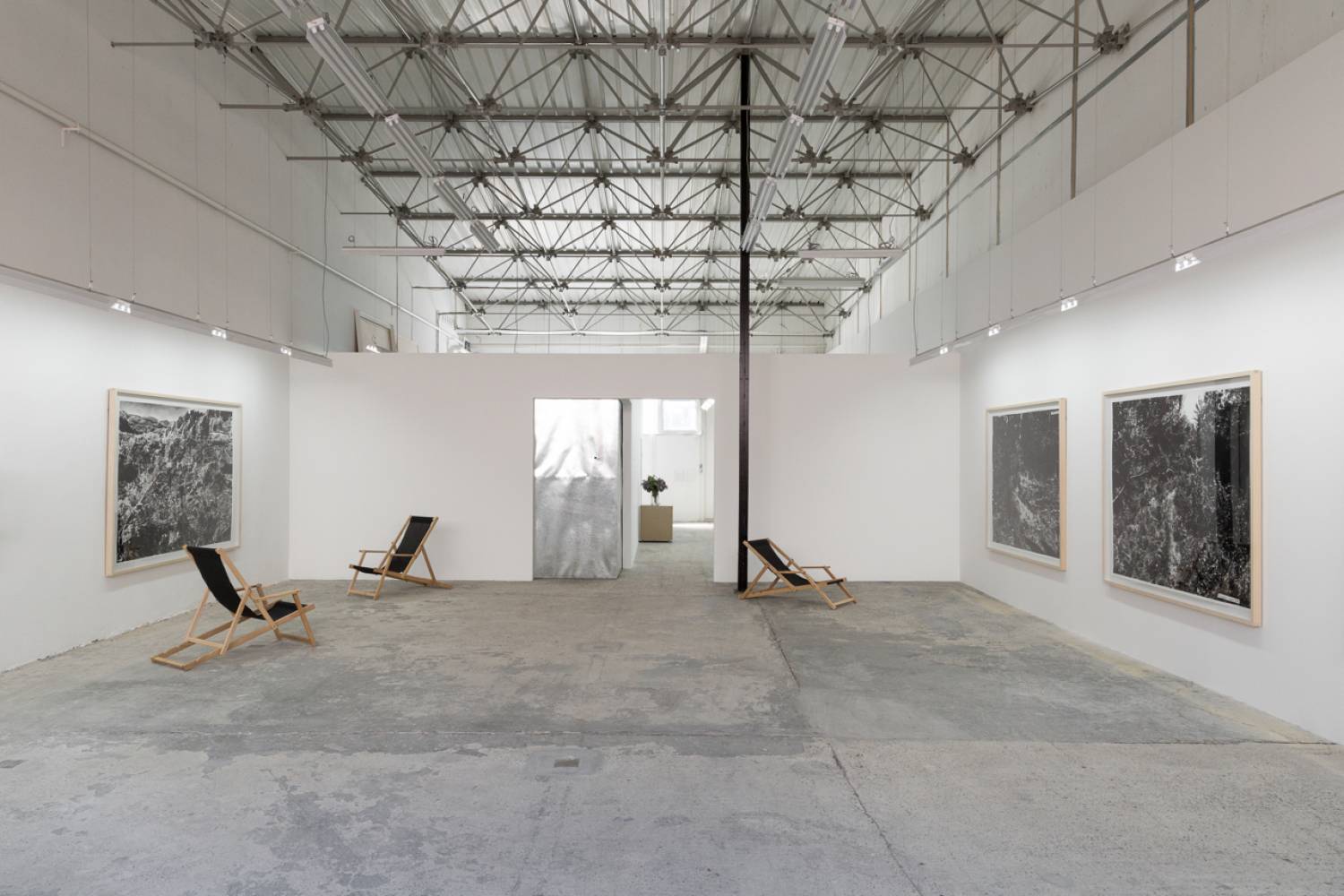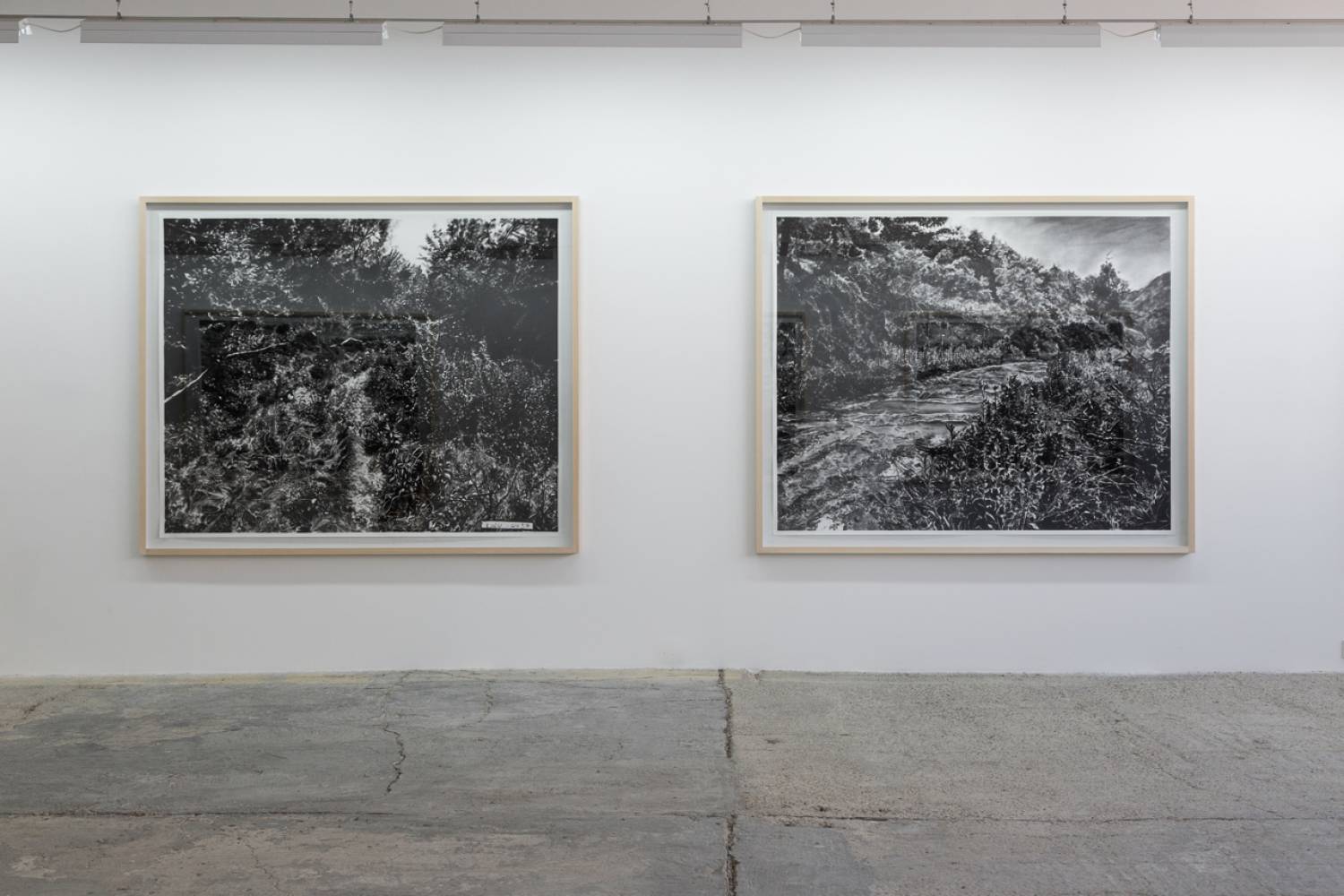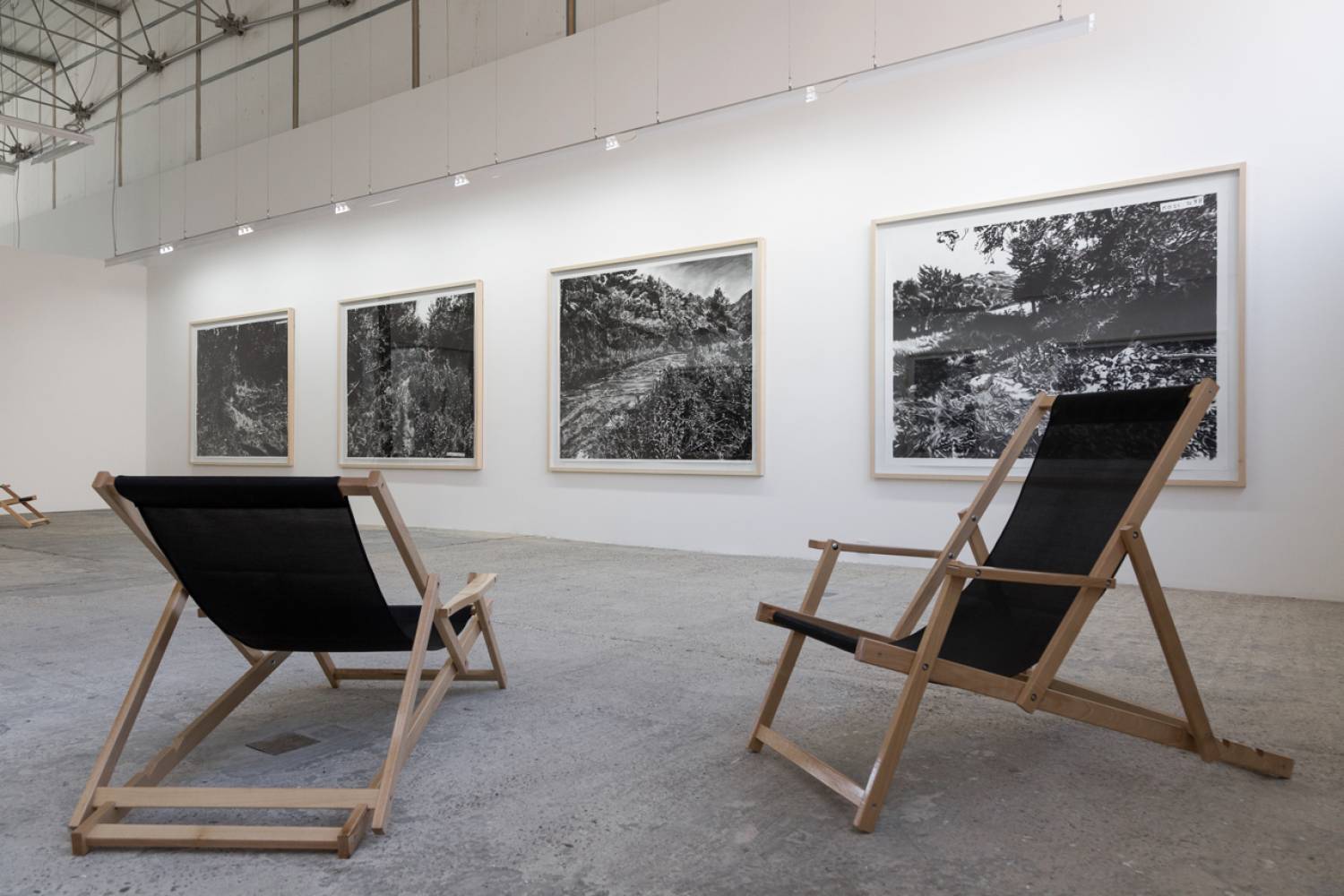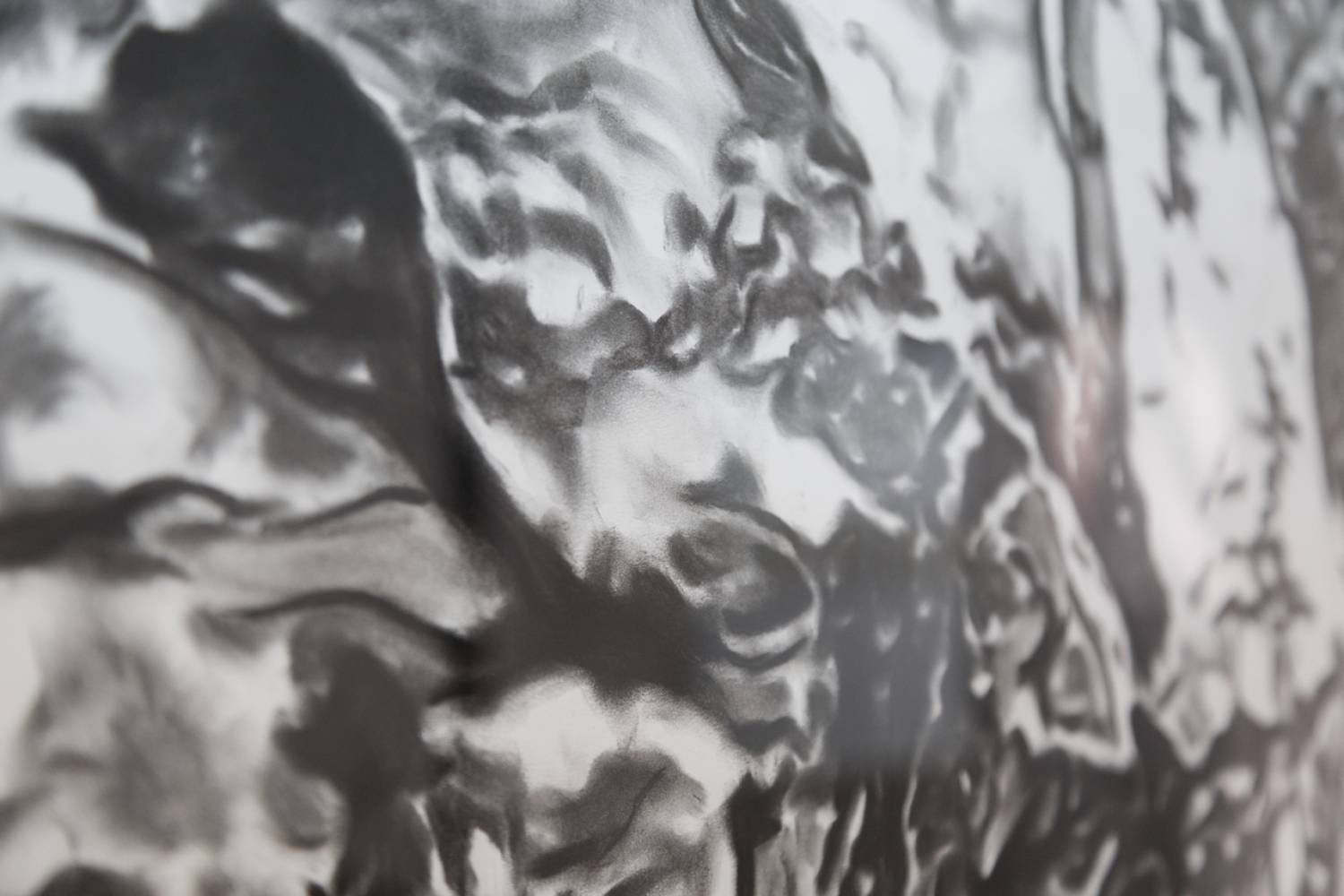Exhibition
Disturbed Soil
Text by Natalija Paunić
Human relationship with earth is complex and primordial, ranging from pragmatic to metaphysical. As if earth carried the weight of the world itself, we’re on top of the lid of this giant mass before which the weight of human body or gesture is unremarkable. Yet there is a certain heaviness to excavation,physical labour and effort, decision,commitment – a human-sized hole in the ground interferes with strata.
Nature is above and below the soil, but somehow also within us, wild and essentially blind for good and evil. While it presents itself through violence in people, in art it often assumes the shape of a landscape.Vladimir Miladinović summonsnature through a peculiar form of landscape in his own art. In the missing contact of the earth and the sky, these landscapes will hardly provide serenity. Disturbed soil walks us through layers that go much deeper than the surface of the paper. The depth of soil, however, seems endless; so does the possibility toimagine different truths behind theimage. A single paper-thick sheet of history makes the memory restless.
Through his own renditions of photography made not out of artistic endevours but for forensic purposes, the author creates a body of work with an aura independent from theoriginal. This is where Miladinović’sart asks too much from us. It invites us to accept the semiotics behind the harrowing archives that he meticulously brings to life and then to separate the image from what it represents, without giving us any key or the right answer. In a strong, black and white contrast to the factual resides our expectation from art to be independent, self-referential as of the moment in which we see it.
In this light, Miladinović’s newlandscape is one of its own kind,followed only by the yellow flowersthat grow on the soil whose topography survived human nature. Cavities, chalk and coal are left on the other side of the image, as a given, but also with a possibility to be left intact, non-excavated, perhaps even liberated from the past. The grass and the leaves that cover the soil invite us to breed new narratives.
Uznemirena tla
Natalija Paunić
U ljudskom odnosu prema zemljipostoji lepeza snažnih naboja, od pragmatičnih do iskonskih, metafizičkih, gde zemlja menja oblik od materije do metafore za težinu. Kao reč koja sama u sebi nosi teret fizičkog rada i mističnog sadržaja, zemlja postavlja čoveka u poziciju gde je, na tikom poklopcu nečeg nesagledivog, veličina jednog ljudskog tela ili gesta nevidljiva.
Iznad i ispod tla stoji priroda koja je oduvek veća od nas, ali je u isto vreme u nama; nasilna i divlja, surova, slepa na dobro i zlo. Dok u ljudima dobija oblik nasilja kroz rat i strah, u umetnosti se pojavljuje u obliku pejzaža. Vladimir Miladinović ovu prirodu definiše kroz neobičnu iteraciju njene klasične forme: u nestalnom kontaktu neba i tla rađa se utisak da njegov pejzaž ne smiruje. Serija Uznemirena tla šeta posmatrača kroz slojeve nemerljvo dublje od površine papira. Dubina tla doseže beskraj, kao i naša mogućnost da zamislimo različite istine pred slikama koje vidimo.
Kroz sopstvenu interpretaciju fotografija koje su snimili timovi forenzičara, autor stvara vizuelnepredstave aurom izdvojene oddokumenata na koje referišu. Zato je pred nama težak zadatak. Miladinovićev rad nas izaziva da pejzaže koji su pred nama odvojimo od arhivske slike, iako nam ne daje tačan ključ niti pravo uputstvo, prepuštajući sve pogledu i imaginaciji. U snažnom, crno-belom kontrastu sa dokaznim materijalom, koji služi kao polazište, stoji naše očekivanje od umetnosti da bude samostalna.
Na ovoj putanji Miladinovićev novi pejzaž je jedinstven i herojski sam, u pratnji žutih cvetova koji rastu na tlu gde je topografija ispratila i nadjačala ljude. Šupljine, kreda i ugalj ostaju sa druge strane slike, sa mogućnošću da ostanu netaknute, neistražene, oslobođene od prošlosti. Istorija ostaje na debljini papira; flora kojaprekriva tlo poziva nas da razvijemonove priče.

















